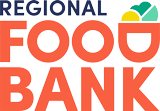In the Fall of 2020, the Food Bank partnered with the Siena College Research Institute to analyze existing services in our 23-county region. Using data provided by Feeding America, we were able to map food insecurity rates in each community we serve, comparing it to the locations of our partner agencies and the amount of food distributed to each community.
The Gap Analysis provided us with a roadmap of opportunities and helped us identify priority communities where no pantries exist. We are now establishing partnerships within these communities to respond to these unmet needs.
Our pandemic response taught us that our traditional methods of food distribution did not always moved the needle on food insecurity. With that in mind, we are looking to improve food access in underserved areas by turning to the community for help. Thanks to a $184,000 grant from The Schenectady Foundation, we are piloting a program in four Schenectady neighborhoods where we will seek input from residents and jointly create solutions to bring food assistance to these underserved communities.
To start the project, we will hire community outreach workers in each of the four Schenectady neighborhoods. These workers will talk to a wide array of people within each community – those experiencing food insecurity, local groups and organizations, and current hunger relief players – to determine the best ways for the people who live in these areas to access charitable food.
What types of food are most desirable? What is the most convenient way for people to access this food? These are some of the questions we hope to answer.
We will discuss existing ideas, such as mobile pantries, brick-and-mortar pantries, making use of distribution sites like schools or other community hubs, or online ordering using the OrderAhead platform. We will brainstorm new solutions too, with recommendations from community members themselves.
The project will span two years with the first year focused primarily on gathering input from the four target areas and designing pilot programs. The second year will focus on program implementation and assessment.
To take a look at our gap analysis mapping, please visit: www.tinyurl.com/regionalfoodbankgap.






how much data does it have?
I am currently writing a paper that is very related to your content. I read your article and I have some questions. I would like to ask you. Can you answer me? I’ll keep an eye out for your reply. 20bet
Embarking on the journey of ‘Taking Our Program Development on the Road’ is an exciting venture. Investing wisely is crucial, and forums like https://icoholder.com/en/ico-forums provide valuable insights. Understanding the dynamics of the ICO landscape is key to making informed decisions. Let’s navigate this path with prudence and a keen eye for emerging opportunities. Here’s to a successful and insightful development journey!
Really appreciate you sharing this blog post.Much thanks again. Much obliged.
Excellent content! The way you explained the topic is impressive. For further details, I recommend this link: EXPLORE FURTHER. What do you all think?